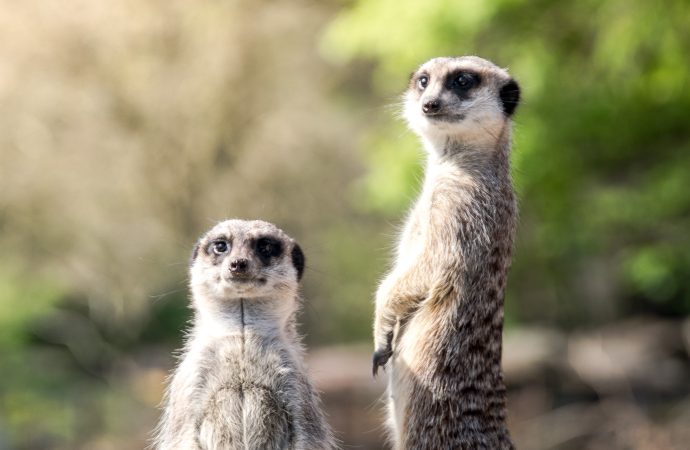Meerkats are small mammals that are well known for their unique appearance, social behavior, and survival skills in harsh environments. These desert-dwelling creatures are part of the mongoose family and are found in the Kalahari Desert and other arid regions of southern Africa. Meerkats are fascinating animals that have evolved a range of adaptations to
Meerkats are small mammals that are well known for their unique appearance, social behavior, and survival skills in harsh environments. These desert-dwelling creatures are part of the mongoose family and are found in the Kalahari Desert and other arid regions of southern Africa. Meerkats are fascinating animals that have evolved a range of adaptations to cope with the challenges of their environment.
One of the most obvious adaptations of meerkats is their physical appearance. Meerkats have a slender body, long tail, and short legs, which make them well suited for life in the sandy terrain of the desert. They also have sharp claws that help them dig burrows, which serve as their homes and provide protection from predators and the harsh desert climate.
Meerkats are social animals that live in groups of up to 50 individuals, known as mobs or gangs. Living in groups provides many benefits, including safety in numbers and cooperative behavior that helps them find food and care for their young. Meerkats have developed a range of adaptations to help them survive as a group, including complex communication systems and a hierarchical social structure.
One of the most interesting adaptations of meerkats is their communication system. Meerkats use a range of vocalizations and body language to communicate with each other, including barks, growls, whistles, and tail movements. This communication system allows them to coordinate their activities, warn each other of danger, and establish their social hierarchy.
Meerkats have also developed a range of behavioral adaptations to cope with their harsh environment. For example, they have evolved the ability to stand on their hind legs and scan their surroundings for predators and prey. They also have a keen sense of smell, which helps them detect food and avoid danger.
Another important adaptation of meerkats is their diet. Meerkats are omnivorous and eat a variety of foods, including insects, rodents, reptiles, and plants. They have a high metabolism and require a constant supply of food to survive. Meerkats have developed a range of foraging strategies to find food, including cooperative hunting and food-sharing behaviors.
Despite their many adaptations, meerkats still face many challenges in their environment. Habitat loss and fragmentation, climate change, and hunting by humans are all threats to their survival. Fortunately, there are many conservation efforts underway to protect meerkats and their habitat, including captive breeding programs and habitat restoration initiatives.
In conclusion, meerkats are fascinating animals that have evolved a range of adaptations to survive in their harsh desert environment. Their physical appearance, social behavior, communication system, and foraging strategies are all examples of how they have adapted to cope with the challenges of their environment. However, they still face many threats to their survival, and it is important to continue to support conservation efforts to protect these unique and valuable creatures.

















Leave a Comment
Your email address will not be published. Required fields are marked with *